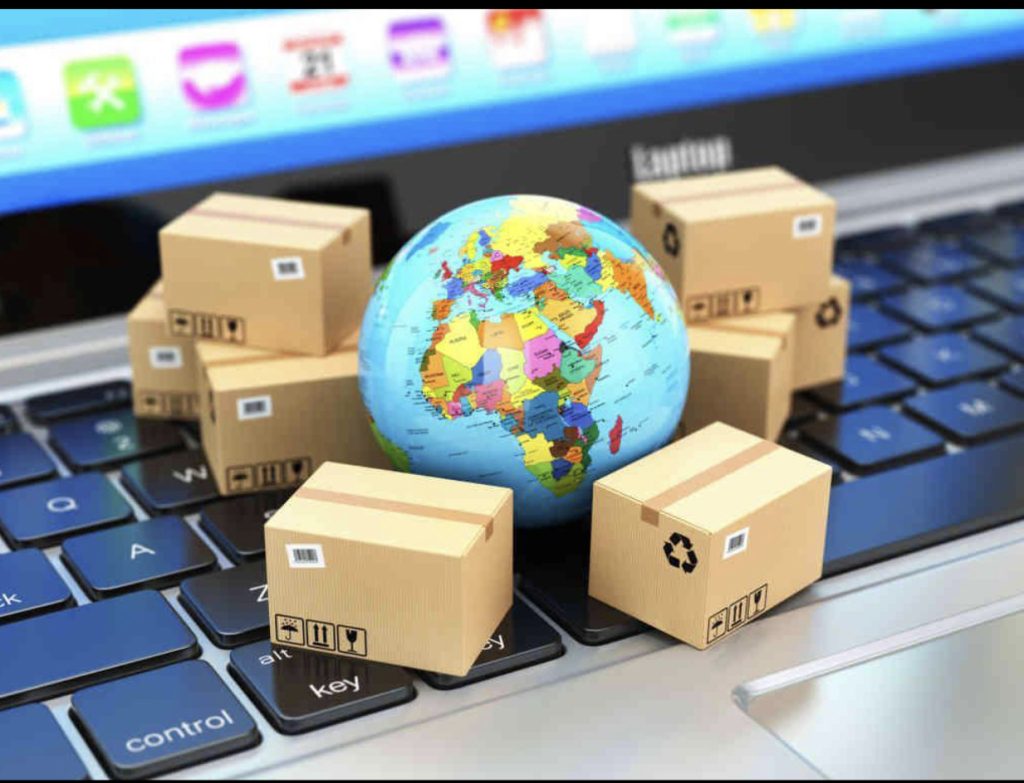Five Game-Changing eCommerce Logistics Trends and Two Pioneering Solutions
Online shops have long gained extreme popularity with users worldwide. No wonder: you needn’t go anywhere when you want to buy something. Just browse a catalog on your PC or phone, choose the items you need, pay, and get your purchase delivered to your door. With the outbreak of COVID-19, it became even more obvious that such a shopping model is indispensable. And one of its key elements is logistics – the way how exactly goods are being delivered and what it takes to carry out this process as fast and efficiently as possible.
eCommerce and logistics are thus closely connected. And the number of companies engaged in these operations is growing steadily. Statista predicts that by 2026, the eCommerce logistics market will hit €770.8 billion. This figure is impressive in comparison with €441 billion two years ago. Let’s find out why this type of service is gaining momentum.
Why eCommerce logistics matters
Let’s start with the definition of eCommerce logistics. This is the process of delivering goods to individuals who make purchases in online stores. The sequence of operations here is as follows: purchase – packing – shipping – delivery. Needless to say that everything should run as smooth as possible to ensure customer satisfaction and greater retention rates. Even if an item is perfect, lengthy delivery can ruin the overall experience and scare away customers. There are numerous stores available, so they will simply choose another one next time.
That’s why establishing well-oiled processes in this area is vital for businesses willing to thrive and get ahead of competition.
The key components of the process are:
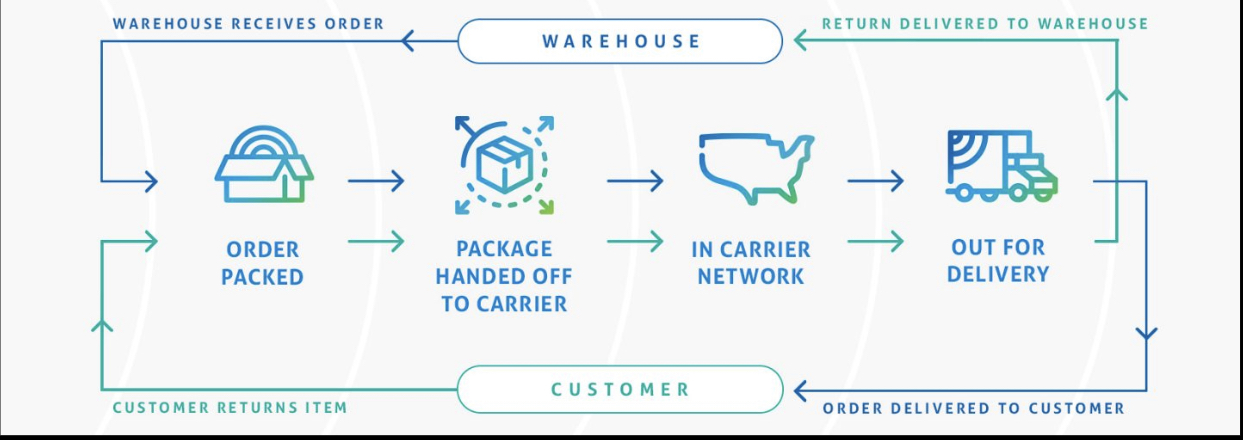
Order fulfillment
This part involves receiving, processing, and sending out customer orders. A company operating in the eCommerce sector should focus on the quality, accuracy, and speed of delivery when evaluating potential vendors. This is vital and directly related to CX and the shop’s reputation.
Failing to meet the basic needs will always leave the consumer feeling let down. No matter how good a marketing campaign is or how appealing a product looks. Imagine a person willing to buy an anniversary gift for their grandmother. It’s gorgeous and totally to her taste – but it arrives three days after the birthday party. Not quite pleasant for the one who intended to make a stir during the celebration, isn’t it?
Inventory management
This process is intricate and requires special expertise. The inventory level is dependent on the location of a retailer, the type of merchandise they are offering, and their financial state.
Having too much inventory is not as beneficial as it initially appears, as the money could be used to address more urgent needs. On the flip side, customers usually desire items that are sold out quickly.
Determining inventory levels can be done in multiple ways. Ultimately, however, a handful of variables is in play.
- What is the total value of your inventory?
- What is the usual amount of product you keep in stock?
- What is the regular demand?
- How do you refill your inventory?
Keeping these variables straightforward makes inventory management easier. As complexity increases, inventory management becomes more difficult, so it would be wise to consult experts.
Warehousing
The practice of warehouse management involves deciding where and how to store products prior to them being sent to customers. Warehouses help online retailers expand their fulfillment capabilities and take on more orders, while still maintaining quick and precise delivery.
Reverse logistics
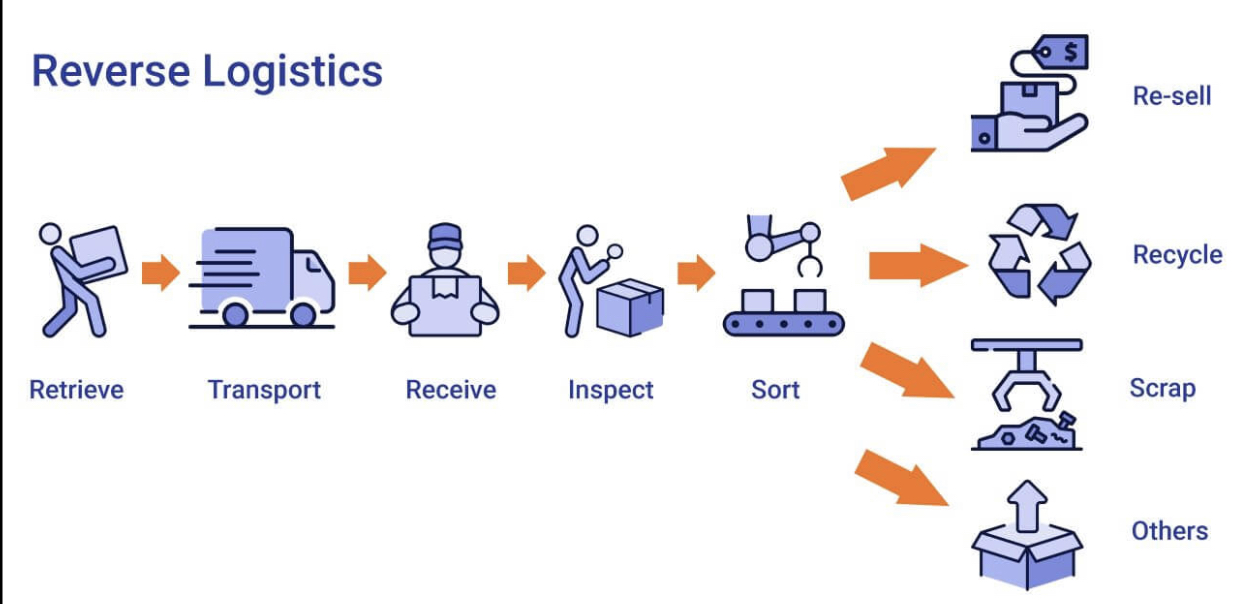
Processing and dealing with merchandise that is sent back due to a customer’s displeasure or transit damage is what returns and reverse logistics is about. You don’t just handle incoming orders and ship purchases to buyers, you should think ahead. Things like customer dissatisfaction or spoiled goods happen every once in a while, so it’s essential to think out how reverse processes will take place.
eCommerce retailers often suffer from returns, which are not necessarily their fault. It’s well known that many people buy different versions of a product to return those that don’t fit them. For example, if a person is not sure of a dress size, they can order three items and choose just one, fitting the most.
Logistics management types
Depending on its capacities and budget, a company can opt for one of these models:
- Working with third-party providers
3PL providers facilitate a balance between full control and no control. With this option, you still have the power to decide which products to sell on your eCommerce site. Everything remains the same, except that your goods are held, labeled, and put into a third-party delivery hub and fulfillment center.
- Managing in-house processes
Businesses with physical stores or storage facilities can opt for managing their own logistics internally.
In this situation, there operates a committed squad that handles new items, stores them, and takes them out when a web purchase happens. In this model, working with a shipping carrier such as DHL is necessary to have the orders collected and delivered to the customer.
- Dropshipping
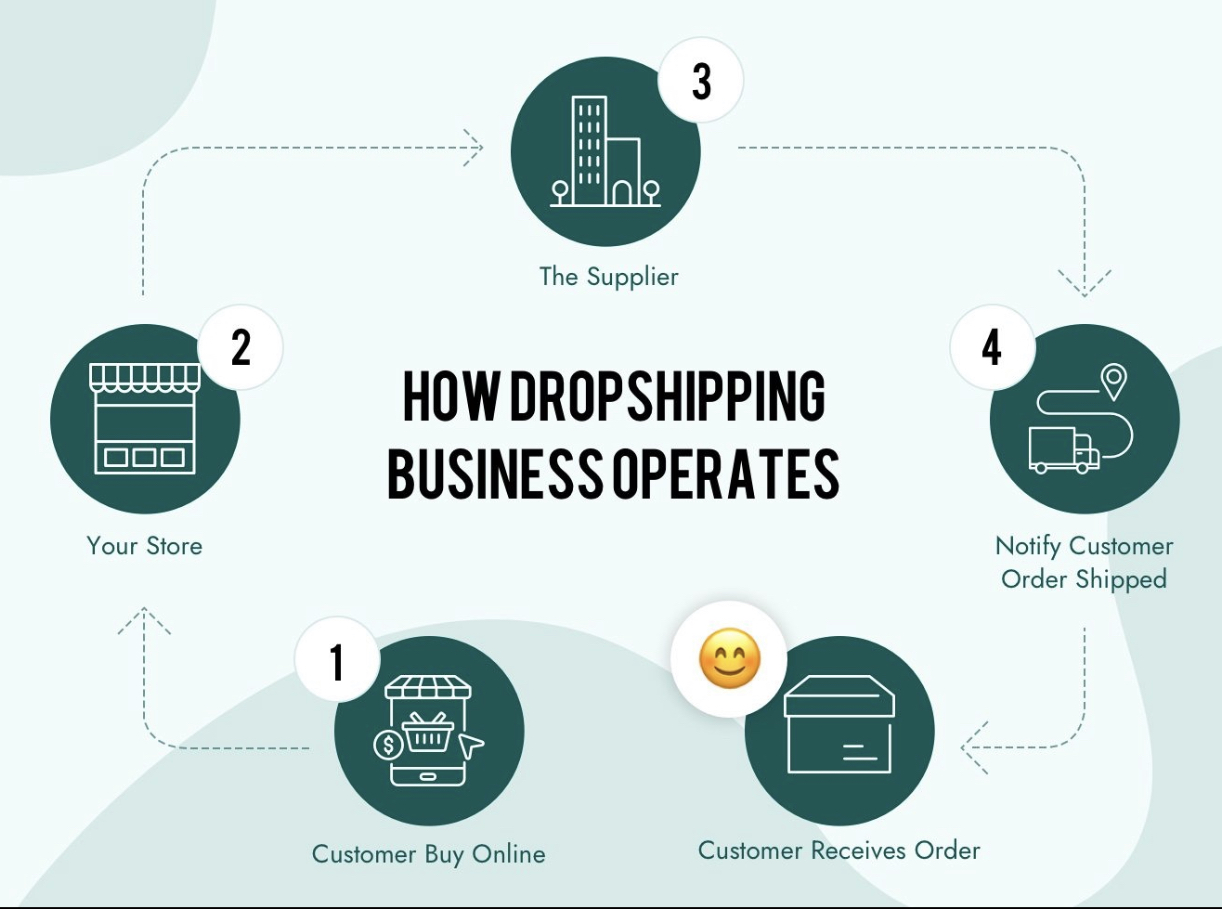
Retailing with a dropshipping model offers a more straightforward process. Companies selecting it never physically come in contact with the items they offer for sale online. As soon as a purchase is made online, it’s sent to a third party that will select, package, and send it.
Five eCommerce logistics trends to be aware of in 2023
This sector is known for revolutionary innovations. As demand for online purchases is never ceasing, companies come up with new ideas of how to deliver orders.
Let’s look at several trends that are relevant now.
Digitalization and automation
The trend to digitize processes and introduce automation tools whenever possible is global. Companies across industries are embracing this approach to achieve maximum efficiency. But this requires certain skills and capacities, it’s not just providing your employees with laptops or ordering software solutions.
Developers are offering new technologies on an ongoing basis, and companies need to follow IT innovations to be the first to incorporate them into their processes. As the number of orders, and consequently deliveries, grows exponentially, this poses a challenge to businesses. They should leverage the power of Big Data to handle huge data streams in real time.
The following trends are worthy of special attention:
- Improvements in digital payment methods using mobile devices. Since online commerce is fundamentally driven by non-cash payments, it is very important to constantly look for new convenient ways to make transactions;
- Predicting market conditions through innovative digital tools;
- Working with customer databases to predict demand and buying behavior;
- Expanding mobile integration capabilities;
- Implementing automation at various stages of delivery;
- Ongoing employee training on new technologies. After all, to use something successfully in practice, you need to know the theory perfectly.
Drones and other pioneering methods of delivery
The legendary Amazon is, as usual, ahead of others in using innovation. The company is gradually adopting drones to deliver goods, which presents a tremendous opportunity for growth and development. Automation still has a long way to go for UAVs to be adopted everywhere, but more and more players are joining this remarkable initiative.
Investing in such machines is a promising endeavor that will eventually pay off and turn a profit. However, companies will look for other unusual methods of delivering goods based on robotics and automation. Such remarkable innovations shape the future of eCommerce logistics.
Personalization
Personalization is one of the cornerstones of eCommerce. Companies are trying to get as many customers as possible, and one of the most effective ways to achieve this goal is to personalize offers to each customer. If clients receive interesting offers that fully match their needs and tastes, they are more likely to use the business more than once.
Sometimes, it is important for customers to know where the product comes from, and they give preference to manufacturers from a certain region/country. One example of this is the Made in America campaign.
Logistics services can also be tailored to this trend. For example, it’s worth implementing flexible processes to carry out delivery on the same day the order is placed. Or leave it up to the customer to choose the time when the order is collected and leaves the distribution center, etc. Round-the-clock support and communication with delivery chauffeurs is another option for how to personalize services in this area.
Influencing and SMM
Influencer marketing is gaining unprecedented momentum, and Instagram, Facebook, and YouTube have long been platforms where you can sell or market almost anything. Including the services of logistics providers. So, enlisting the support of influencers is one of the current eCommerce logistics trends.
To promote their business, companies are investing a lot of money in this area as well. Imagine that some influential person advertises the provider of such services as a reliable partner carrying out fast, seamless, and high-quality delivery. Furthermore, this person mentions that the return (if necessary) is just as fast and efficient. This will attract a lot of attention from representatives of online commerce, and for logistics companies, will mean building a solid reputation.
Cross-border logistics
One more relevant eCommerce logistics trend is related to the growth of international trade. The processes of globalization in the world do not stop, even despite the recent dramatic events associated with COVID-19. People make purchases not only in local stores but also in large international marketplaces. Naturally, this implies uninterrupted cross-border processes.
Many companies provide high-quality services of this kind and thereby gain a reputation among eCommerce providers. Cooperation with a reliable supplier able to deliver goods to remote regions and countries is the key to success and increased customer satisfaction. Thanks to this, you can enter new markets and strengthen your position there.
Successful implementation of modern technologies: two cases
Let’s loot at two examples to find out how this works.
Cubyn: a digital product for a European eCommerce network developed by Andersen
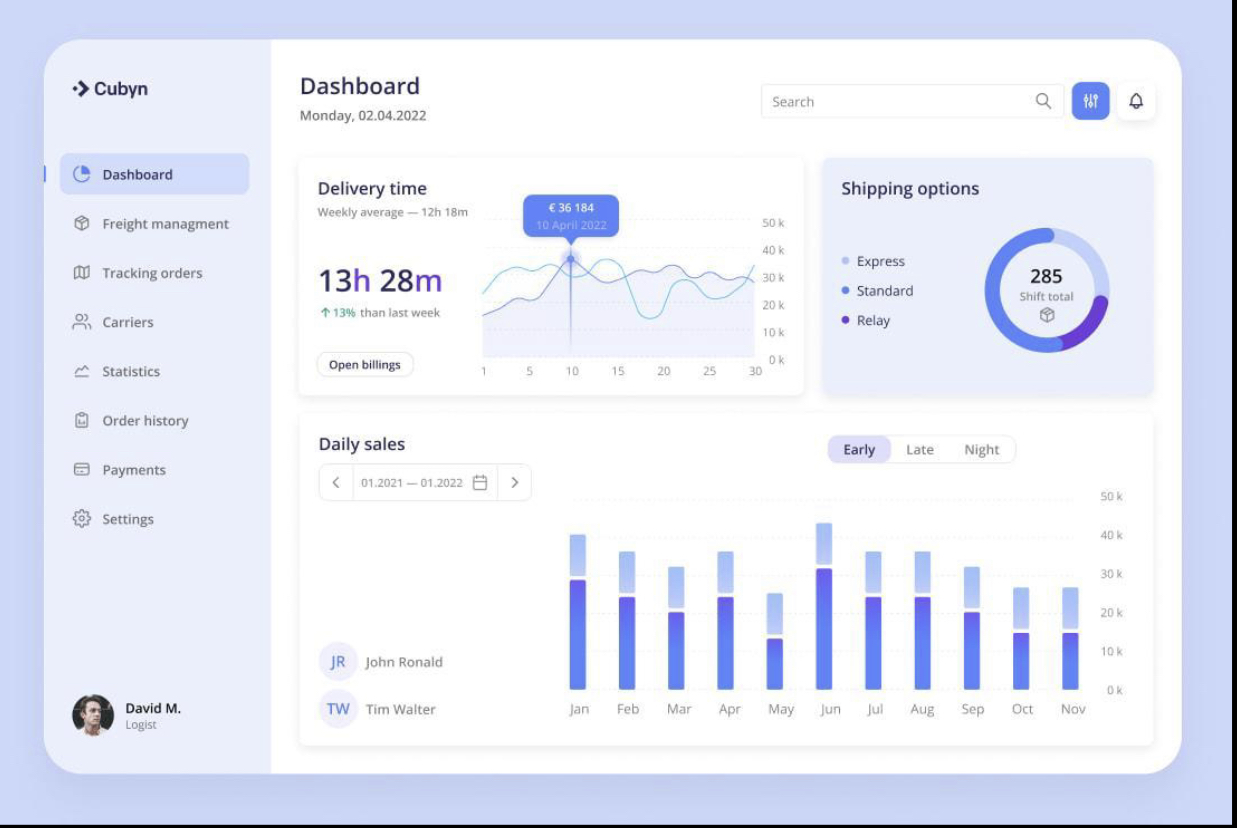
A French fulfillment and delivery service provider working with eRetailers ordered a digital solution to create a seamless supply chain network and implement first-class fulfillment functionality.
The solution includes features such as unique tracking codes (quantity, weight, destinations, etc.), live cargo tracking, regular reports, data analysis, regular inventory checks, starting order fulfillment tasks instantaneously, selecting orders, planning the best routes, cost overviews, and more.
Due to this digital platform, the company experienced a 10% shortening in transit times and an improvement of 20% in data accuracy.
Amazon Robotics: machines involved in order fulfillment
Amazon uses automated storage and retrieval systems and leverages advanced technology in the industry. Robots operate in gigantic warehouses. They perform all the necessary operations with goods – moving, arranging, storing, assembling, packing, etc. Humans control this process, and this fruitful cooperation leads to impressive outcomes.
As a result, the company has been able to significantly reduce the time and costs that would inevitably be incurred if all these operations were performed manually. The introduction of technology has also had an impact on the speed and accuracy of delivery: it has increased.
Amazon Robotic Fulfillment Centers are located in many countries in America, Europe, and Asia. The future of eCommerce logistics greatly depends on innovations of this kind, and Amazon can serve as a paragon for those willing to stay at the top.
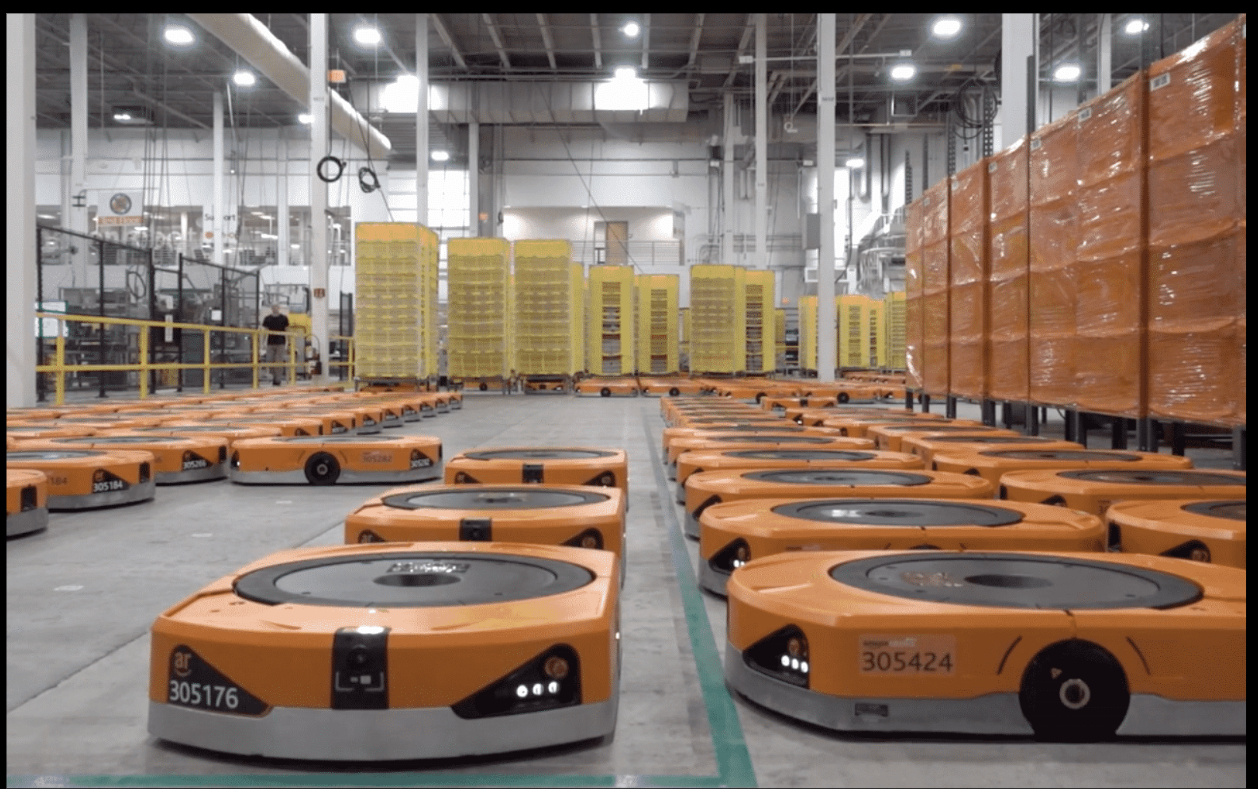
Conclusion
The success of eCommerce companies greatly depends on cooperation with top-notch carriers and other businesses operating in the supply chain. Only in case if deliveries are fast and seamless, selling goods online will be efficient and attract happy customers.
In turn, logistics companies also need to stay ahead of the curve and implement the latest innovations in their area. For this purpose, partnering with IT firms offering сustom logistics software consulting services is a must. Top experts will carry out projects of any type, duration, and complexity. This allows businesses to take their operations to the next level.

